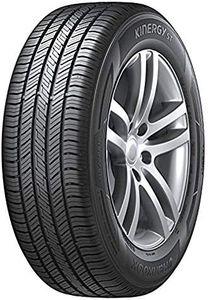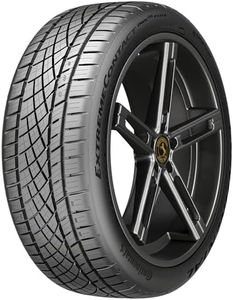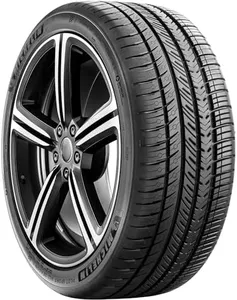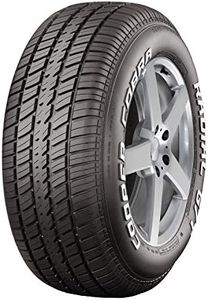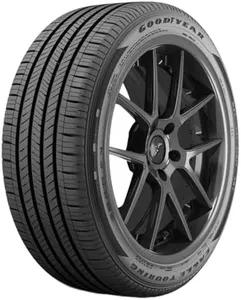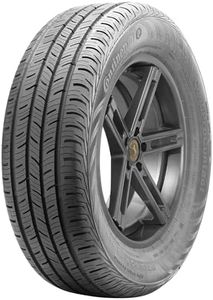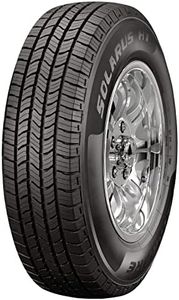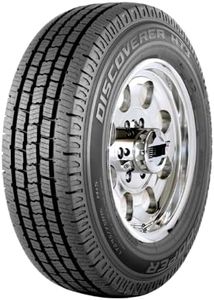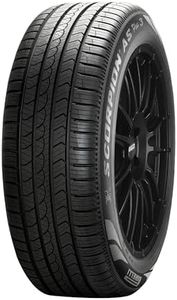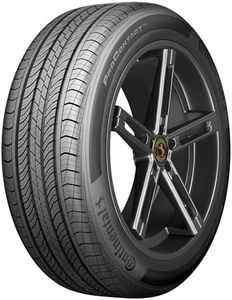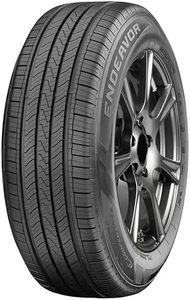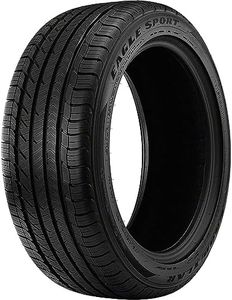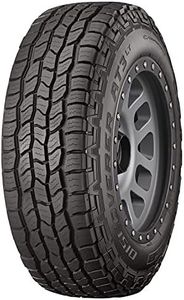10 Best All Season Tires 2025 in the United States
Our technology thoroughly searches through the online shopping world, reviewing hundreds of sites. We then process and analyze this information, updating in real-time to bring you the latest top-rated products. This way, you always get the best and most current options available.

Our Top Picks
Winner
Hankook Kinergy ST H735 all_ Season Radial Tire-225/60R17 99T
Most important from
4927 reviews
The Hankook Kinergy ST H735 is a solid choice for an all-season tire, especially if you want dependable performance throughout the year. Its symmetrical tread pattern with optimized tread block stiffness helps improve durability and handling, which means you can expect a decent tread life and a steady grip on dry roads. The tire’s rigid center rib boosts dry handling and braking, making your drive feel more controlled.
When it comes to wet conditions, the three wide circumferential grooves do a good job of channeling water away, reducing the chance of slipping on rainy days. Customers also appreciate the quiet ride, thanks to the special pitch sequence and multiple sipes that cut down on road noise and improve comfort. In terms of capacity, this tire supports up to 1709 pounds with a speed rating suitable for everyday driving, making it a practical fit for many passenger cars with a 225/60R17 size.
On the downside, while the tire performs well in general, it may not match the grip and handling of premium tires in extreme weather or high-performance scenarios. Also, the tread depth of 8.8/32nds is average, so keep an eye on how quickly it wears down depending on your driving style. If you're looking for a reliable, comfortable tire that balances quiet rides and good traction for year-round use without breaking the bank, this Hankook model is definitely worth considering.
Most important from
4927 reviews
Continental ExtremeContact DWS06 PLUS UHP All Season 245/40ZR18 97Y XL Passenger Tire
Most important from
815 reviews
The Continental ExtremeContact DWS06 PLUS UHP All Season Tire is designed for performance in various weather conditions, making it a solid choice for drivers looking for versatility. One of its standout features is the ability to provide up to 50,000 miles of tread life, which is impressive for a tire in its class. The SportPlus Technology enhances responsive handling and grip, ensuring a safe ride whether on dry pavement or wet surfaces. This tire also excels in short braking distances, which is a crucial safety aspect for many drivers, including those who occasionally face snow and icy conditions.
A unique aspect of this tire is its Tuned Performance Indicators, which help you gauge the tire's performance in different conditions, ensuring you know when to consider replacing them. Visually, the tire boasts a stylish design, appealing to those who care about aesthetics as much as performance. However, there are a few points to consider. While the DWS06 PLUS performs well in many conditions, it’s primarily designed for non-winter seasons, which means extreme winter conditions may not be its strong suit. Additionally, its performance may not match that of dedicated summer or winter tires when used in their respective seasons. Although the ride comfort is generally good, some users might find it slightly stiffer compared to other all-season options, which could affect long-distance comfort.
Most important from
815 reviews
MICHELIN Pilot Sport All Season 4 Performance Tire 315/35ZR20/XL 110Y
Most important from
157 reviews
The MICHELIN Pilot Sport All Season 4 is designed to offer strong year-round performance, making it a solid choice for drivers looking for a high-quality all-season tire. Its asymmetrical tread pattern with 360-degree variable sipe technology helps provide good traction on wet and dry roads, while Helio+ technology improves grip even in colder temperatures, which is a plus for light winter conditions. The tire’s tread depth of 10/32nds and a UTQG rating of 540AAA suggest excellent tread life compared to many competitors, meaning you can expect the tire to last longer before needing replacement.
With a load capacity of 2,337 pounds and a speed rating of 110Y, it supports heavier vehicles and high-speed driving, making it suitable for performance cars like the Chevrolet Corvette, which even comes equipped with this tire from the factory. Ride comfort and handling are enhanced by Michelin’s Dynamic Response Technology, offering responsive steering and a balanced feel on the road. However, while this tire handles well in various conditions, it might not be the best option if you frequently drive in harsh winter weather with heavy snow or ice, as it is not a dedicated winter tire.
Additionally, its specialized fit and size (315/35ZR20) mean it’s geared toward larger performance vehicles rather than everyday cars. This tire is ideal for drivers who want a durable, high-performance all-season tire that performs well in most climates, especially if handling and longevity are priorities.
Most important from
157 reviews
Buying Guide for the Best All Season Tires
Choosing the right all-season tires for your vehicle is crucial for ensuring safety, performance, and comfort throughout the year. All-season tires are designed to provide a balance of capabilities, offering good performance in a variety of conditions including dry, wet, and light winter driving. To make an informed decision, it's important to understand the key specifications and how they relate to your driving needs and conditions. Here are the key specs to consider when selecting all-season tires and how to navigate them.FAQ
Most Popular Categories Right Now
